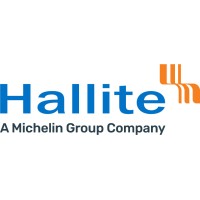
Hallite Seals
Hallite gives you complete confidence in the performance of your hydraulic cylinders, producing premium seals, wipers and bearings of proven quality, and delivering them across the world. Hallite Seals International is an ISO 9001 accredited manufacturer and provider of Hydraulic and Pneumatic Seals and sealing solutions to the global fluid power industry. We operate worldwide with a number of major international companies - renowned for their commitment to engineering excellence. For over 100 years Hallite Seals International has been at the cutting edge of fluid power technology, manufacturing a wide range of rod / gland, piston, and static seals, as well as support and bearing components, for technically challenging applications, from a wide range of materials which include Polytetrafluoroethylene (PTFE), Polyurethane (PU), nitrile rubbers (NBR) and Fluoro-elastomers (FKM).






